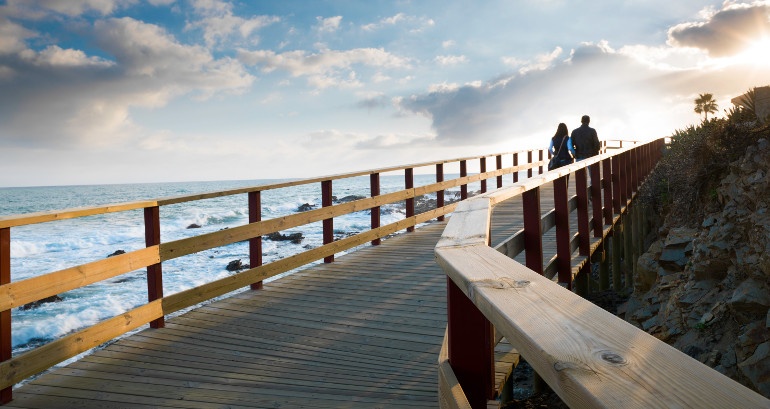The Gran Senda de Malaga (Great Malaga Path) is much more than a route to tour the province on foot, by bicycle or on horseback. It is an invitation to discover the essence of its nine regions through unique landscapes, picturesque corners and a cultural heritage with centuries of history. Here are some tips to lose yourself on paths and sidewalks with friends or family, without age or physical condition being a barrier to live the adventure. An ideal plan to enjoy with children in full nature!
Choose the right path
The Great Malaga Path has a route of 400 miles divided into 35 stages. Many of them are ideal for hiking with children and practising outdoor sports. This is the case of the route linking Benaojan Station with Jimera de Libar, a railway built by the English company The Algeciras-Gibraltar Railway. Would you dare to travel this route on board a kayak, following the parallel course of the Guadiaro river?
Another very recommended trail to get lost with the family is the one that runs between Fuente de Piedra and Campillos. Strolling along a path full of lagoons, you will have the opportunity to see numerous species of birds and one of the largest colonies of pink flamingos in Europe. A true spectacle of nature.
If you prefer coastal landscapes, the path parallel to the sea that connects Malaga and Rincon de la Victoria can be an excellent alternative. Most of the route has a specific lane for bicycle enthusiasts, who can also choose between the two-wheeled vehicle or a horse to get on the path that links Velez-Malaga with Torrox.
A route for everyone
Several stages of the Great Malaga Path are designed so that people with disabilities can travel in a comfortable and autonomous way. A good example is the one that conects Estepona and Marbella, crossing seafront promenades, marinas and beaches of the Mediterranean Sea thanks to an itinerary with hardly any difficulty.
Some suggestions
When starting a route, don’t forget to wear suitable clothes and footwear, sun cream, water and some snacks in your backpack. Although if the expedition includes children or elderly people, it wouldn’t hurt to add a small first-aid kit and some caps.
For trekkers, it is advisable to start walking at a slow pace and progressively speed up. The walking pace should also be coordinated with breathing and it is advisable to avoid long stops and unsafe paths.
From the coastal strip to the hinterland areas, the Great Malaga Path leads to the most unique natural spots, but it also brings us closer to the heritage, gastronomy and traditions of the province. Why not take the opportunity to stroll through the white villages, visit museums or be delighted by the authentic cuisine of the Costa del Sol?








